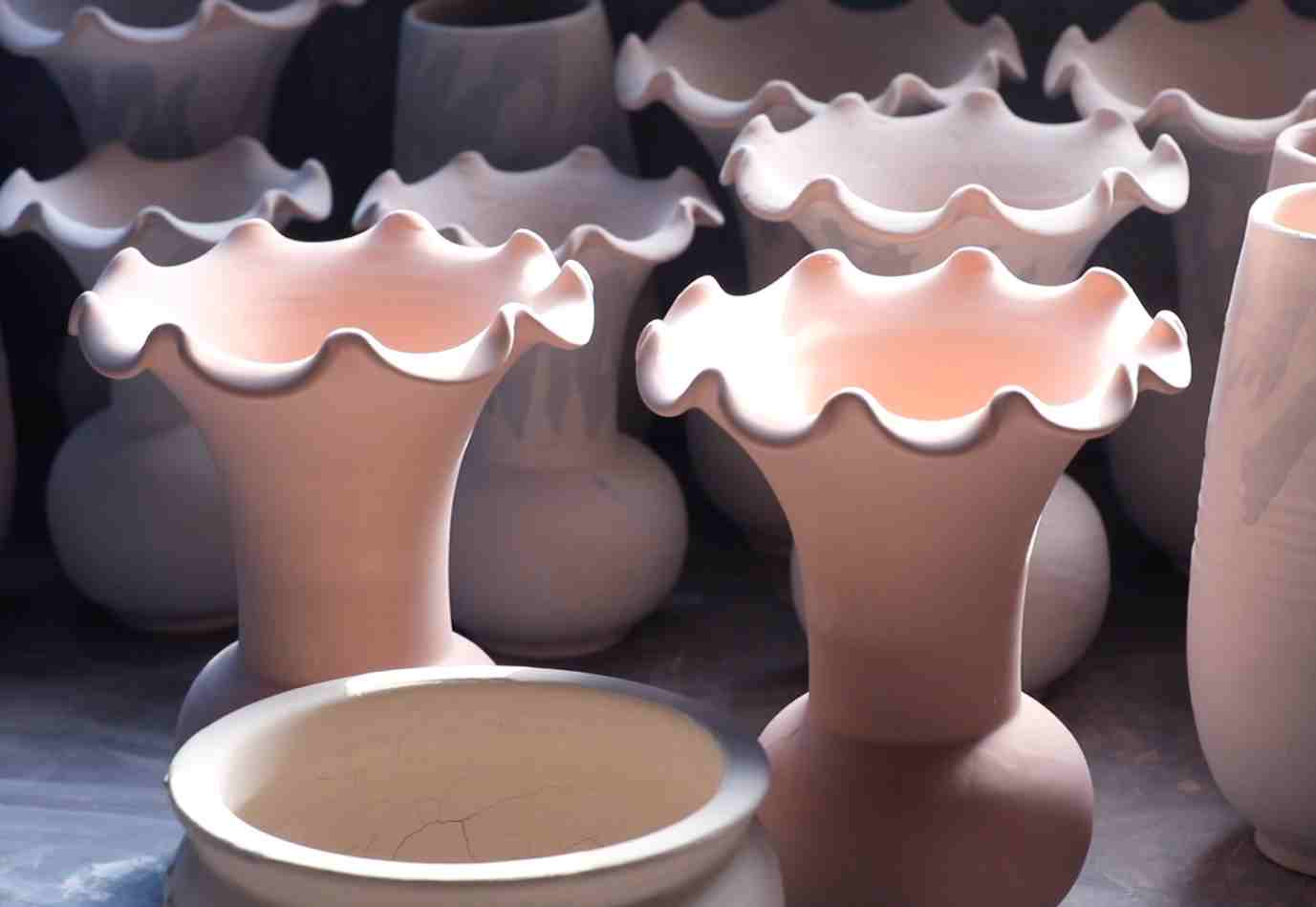
Arts
18:14, 08-Dec-2018
Reporter’s diary: Fire brings color to clay in ancient Jun ware tradition
Updated
17:43, 11-Dec-2018
Li Jianhua
02:18

Shenhou Township in central China's Henan Province is home to Jun ware, one of the country's five well-known kilns from the Song Dynasty.
Walking in the streets of Shenhou, the place where Chinese businessmen gathered nearly 1,000 years ago, I could barely see the sophistication of this small town. The center of China's pottery business here has long gone, leaving it an ordinary small town.
I had expected Jun ware vases to be lined up on the streets but it wasn't the case, possibly because it's wintertime.
I was introduced to master Yang Guozheng, whose Jun wares have won national prizes. Yang began his career in making pottery in 1974 and never stopped making them.

Jun ware artist Yang Guozheng makes pottery in his workshop in Shenhou Township, Henan Povince. /CGTN Photo
Jun ware artist Yang Guozheng makes pottery in his workshop in Shenhou Township, Henan Povince. /CGTN Photo
Yang brought my crew to his workshop. Because of the town's mountainous landscape, we had a strenuous climb with our equipment.
Once again, what I saw was not what I had expected – his workshop was a bit cluttered, yet it was where some of his masterpieces were made.
Lines of vases were lined up on the table, actually they were all over the place. Yang said the Jun ware is elegant and delicate with vivid colors. But I thought they were a bit unpolished, with tiny cracks all over their surface.
Quite similar to any other vase making, the first step is shaping the vase's body. With his dexterous hands, Yang transformed a big chunk of clay into a vase. Within 40 minutes, he molded three different shapes of vases.

Vases line up to be glazed. /CGTN Photo
Vases line up to be glazed. /CGTN Photo
But the process was actually more complicated than it seemed – years of hands-on experience are required to reach Yang's level. He said an apprentice should do three years of training before they could start to shape their own vases, and it might take them forever to make a difference in the field.
Vases were then glazed, and it is this step that makes the articles stand out among all other types of porcelain in China. Yang started to churn up the glaze stored in a vat – very much like making cheese. And it is the glaze, mixed with iron and copper oxide, that does the magic.

Jun ware artist Yang Guozheng glazes Jun wares before they are placed in a furnace. /CGTN Photo
Jun ware artist Yang Guozheng glazes Jun wares before they are placed in a furnace. /CGTN Photo
The iron and copper compounds, oxidized and de-oxidized under high temperatures, give different colors on the surface of Jun ware – mostly blue and red. "Its color representation is mainly decided by the fire. The art of the Jun ware is the art of fire. It's like drawing on the vase with fire," Yang said.
Jun ware is indeed the art of fire, as no one knows what patterns would reveal themselves on the ware, which means days of work could come to ruins if things go wrong.
As for the origin of Jun ware, opinions are divided with some arguing it was created during the Northern Song Period (960-1127) since it was then that Jun ware reached its peak. Nevertheless, some archaeologists contend this craft originated a dynasty later, sometime around 1368.

SITEMAP
Copyright © 2018 CGTN. Beijing ICP prepared NO.16065310-3
Copyright © 2018 CGTN. Beijing ICP prepared NO.16065310-3